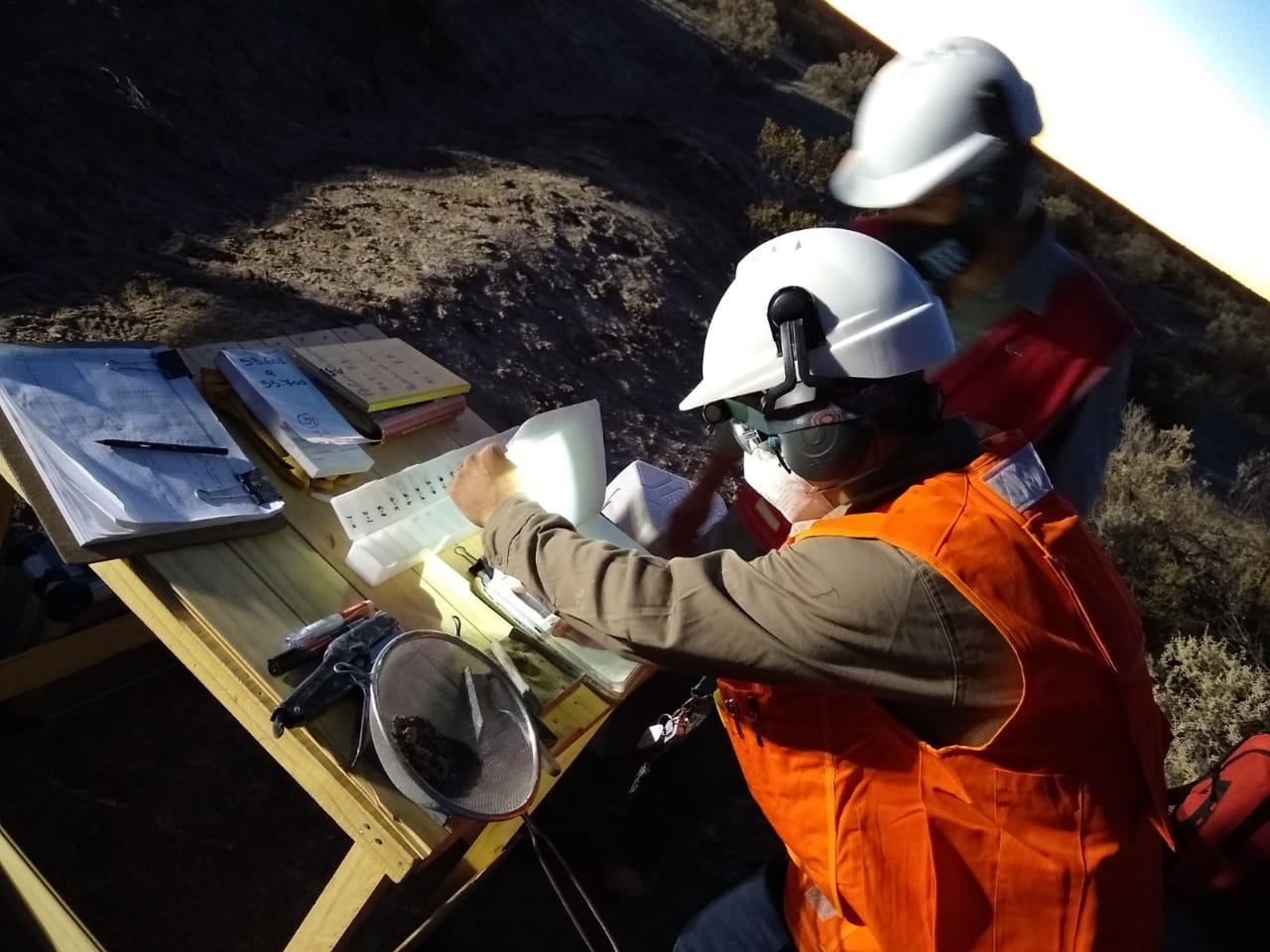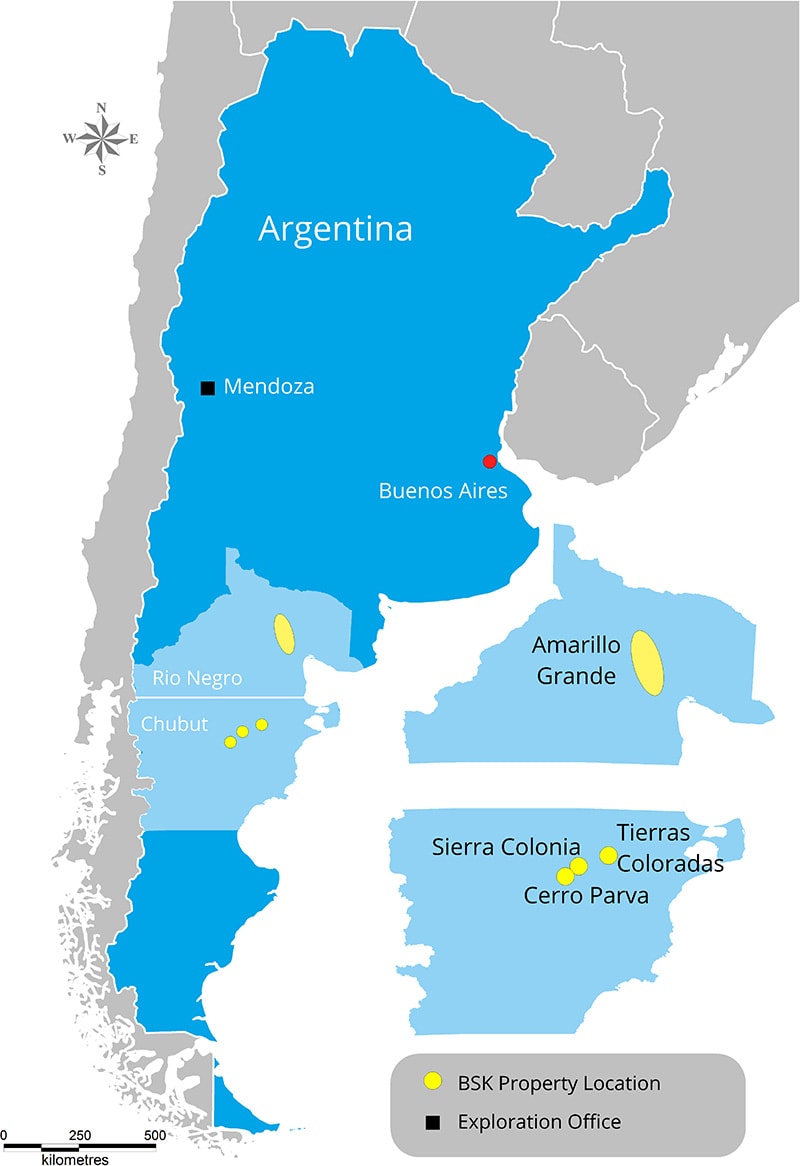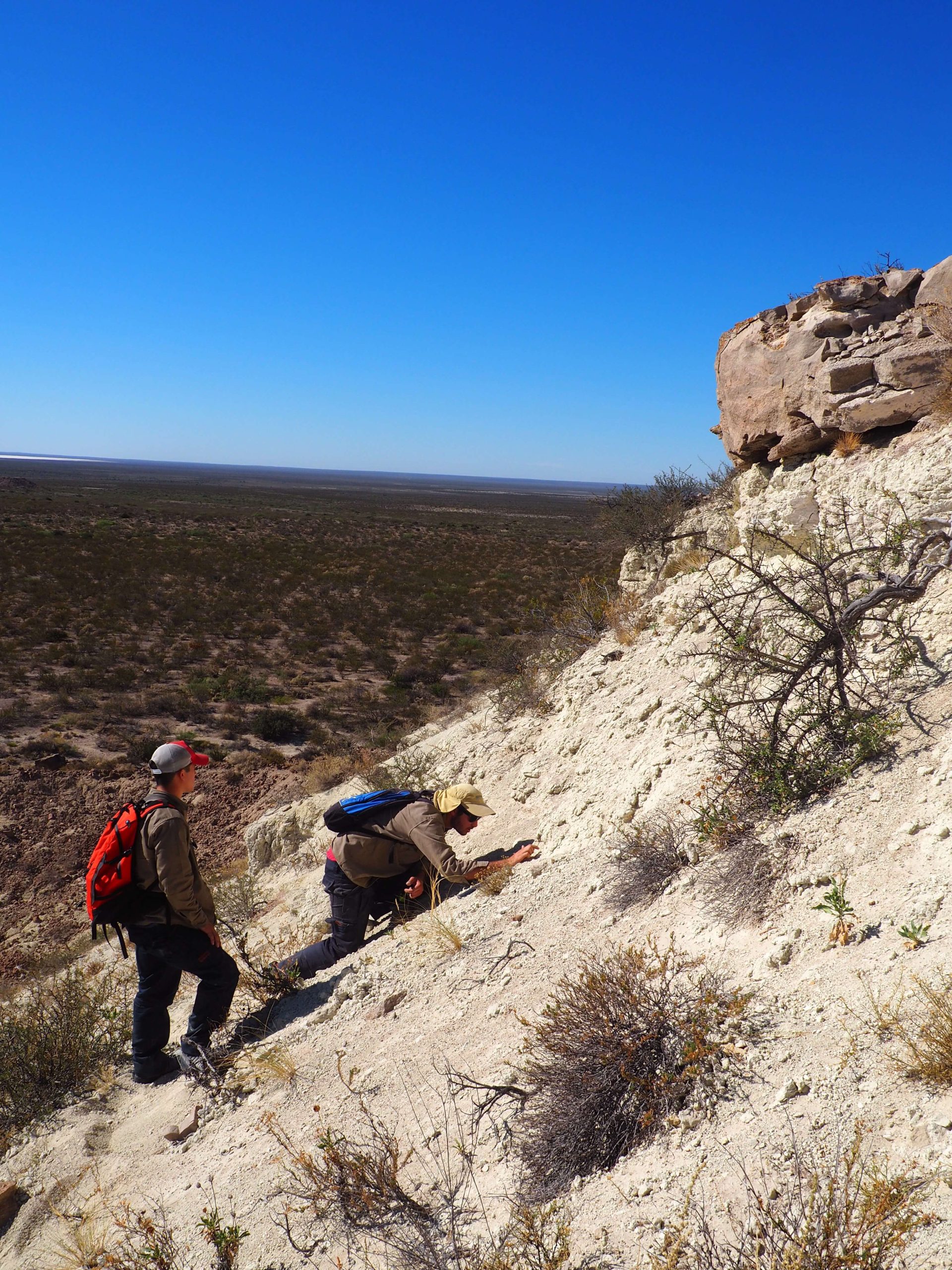Blue Sky Uranium plans to have its busiest year to-date in 2023

By Ian Foreman
I recently had a conversation with Niko Cacos, the President and CEO of Blue Sky Uranium Corp. [TSXV-BSK, OTC-BKUCF, FSE-MAL2], to learn more about the company and what their plans are for 2023.
I had to admit to Niko that I recognized Argentina as having world class copper, silver and gold deposits but not uranium. As it turns out, uranium exploration in Argentina dates back to the early 20th Century with the first uranium deposits being discovered in the 1920’s, but it wasn’t until the 1950’s that large-scale exploration and mining efforts began.
Argentina is the largest generator of electricity from nuclear energy in South America. “The country is working to further expand their nuclear energy sector with additional power plants, but currently lacks domestic uranium production. Argentina’s desire for security of supply could provide a “guaranteed” first customer for a new domestic supplier, which, if we are successful, could be Blue Sky Uranium”, added Niko.
Blue Sky’s flagship Amarillo Grande Project is located in the centre of Rio Negro province, in the Patagonia region of southern Argentina. The project is composed of four main sectors: Santa Barbara, Anit, Ivana and Bajo Valcheta that in summary cover approximately 300,000 hectares or 3,000 square kilometres.
Although the initial discovery was in 2007 it wasn’t until 2016 that Blue Sky started working the project in earnest. Since 2016 more than 16,600 metres of drilling has been completed on the project at 5 different targets. This extensive work allowed the company to announce its first inferred resource estimate for the Ivana deposit totalling 28.0 million tonnes averaging 0.037% U308 and 0.019% V2O5.
Shortly thereafter the company announced their first Preliminary Economic Assessment (or ‘PEA’) for the Ivana deposit in early 2019. The PEA describes the potential viability of the mineral resources to support a surficial mining operation at the Ivana deposit to mine 22.7 million pounds of U308 and 11.5 million pounds of V2O5 over a period of 13 years with a short payback period of only 2.4 years.
Niko made sure to add that the Ivana deposit remains open for expansion and exploration continues to identify new mineralization.
 “I am very proud of the work that the Blue Sky team has accomplished. Amarillo Grande is now one of the most advanced uranium and vanadium projects in Argentina. It has the potential to be a low-cost mining and processing project in a regulatory environment that supports resource development.”, stated Niko. “But we aren’t going to rest on our laurels. We are going to continue to aggressively explore the district.
“I am very proud of the work that the Blue Sky team has accomplished. Amarillo Grande is now one of the most advanced uranium and vanadium projects in Argentina. It has the potential to be a low-cost mining and processing project in a regulatory environment that supports resource development.”, stated Niko. “But we aren’t going to rest on our laurels. We are going to continue to aggressively explore the district.
I was curious as to the history of the project and asked Niko to elaborate on its origins. “Our original work in the area dates back some 15 years, under the guidance of Dr. Jorge Berizzo, we selected Rio Negro province as a high-potential location for new uranium deposits.” explained Niko, “Although Ivana is our main target, it was actually our third discovery in the district.”
Niko further explained the history of the grassroots in-house discovery as follows: “In 2007 the first airborne radiometric survey led to discovery of zones of uranium mineralization at the Anit and Santa Barbara properties. In 2010, Blue Sky completed a large-scale airborne radiometric survey that led to the acquisition of the Ivana property. Initial ground surveys and field work lead to the confirmation of a +25 kilometre-long target area and the Ivana deposit.”
“In 2016 Blue Sky launched an aggressive exploration program to delineate resources and outline economics at Amarillo Grande, in order to capitalize on its early-mover advantage”, added Niko. “The geological model is maturing as exploration of the deposit progresses.”
The known uranium and vanadium mineralization that has been found within the project area to date occurs near, or at, surface and is hosted in poorly consolidated sandstones, minor conglomerates, and mudstones. In addition, uranium and vanadium mineralization also has been found in fractures and zones of secondary porosity within the weathered basement rocks as well as in the regolith debris at the basement unconformity.
“The majority of the near surface mineralization found to date is in the form of the leach-amenable mineral carnotite. Carnotite is a bright greenish-yellow mineral that is an important source of uranium and vanadium. It is classified as a secondary mineral, which means that it is reconstituted from other minerals that have broken down,” explained Niko.
Most of the mineralization found to date in the project area has many characteristics of surficial uranium deposits – where uranium occurs in relatively young sediments or soils adjacent to uranium source rocks or primary uranium deposits. They are typically located in semi-arid to arid regions where transportation is limited and there is a higher potential for concentration of the mineralization.
However, at Ivana a lower, thicker, zone of mineralization was discovered. The uranium mineralization of the lower zone has many characteristics of primary-style uranium mineralization. There are some oxide minerals, but mineralization is predominately coffinite, a uranium bearing silicate mineral. As such, Ivana may be a hybrid of both surficial and sandstone-type uranium and vanadium deposits.
In addition to the excitement for the potential for additional discoveries, the prospect of an improved resource, and an updated PEA, there has been a new found groundswell in interest in the uranium sector. As per Niko, “There has been a significant move in the forecast for the price of uranium – from south of $50 to about $65 today. There are many more people interested in what we have in Argentina.” And, as if that weren’t enough, a recent surge in global interest in vanadium further broadened the potential target markets for material from Amarillo Grande. And that is reflected in Blue Sky’s ability to raise a total of $3.92 million dollars in 2022.
And Niko considers the exploration potential within the district-scale trend to be high. “It feels like we have only scratched the surface. The area is so large, we will be exploring for seasons to come and with luck we will have several additional discoveries in our future, which is the case in more mature uranium districts in similar geological environments elsewhere in the world”, he stated enthusiastically. “The drills will be turning again shortly. The coming drill program is planned for 25 drill holes that will test two new targets: the Ivana East target, which is 10 kilometres east of the Ivana deposit; and the Cateo Cuatro target, which is located 32 kilometres to the southwest.”
So, the future looks bright for Blue Sky Uranium. They are fully financed for their busiest year to date with the goal of improving the calibre of their resource, updating the PEA to incorporate the new resource, and, with luck, new discoveries. I, for one, will be anxiously awaiting the results.



